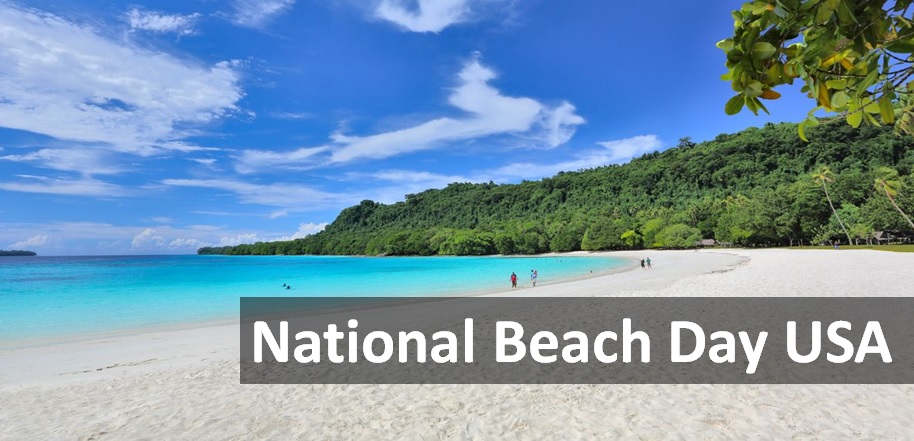Ramsar Sites in India as of 2024, it is 80 in Total

There are 80 total ramsar sites in India which is likely to increase in coming years.Ankasamudra Bird Conservation Reserve Karnataka, Aghanashini Estuary Karnataka, Magadi Kere Conservation Reserve Karnataka, Karaivetti Bird sanctuary Tamil Nadu, and Longwood Shola Reserve Forest Tamil Nadu are new ramsar sites in India. You may be surprise to know that only 26 ramsar sites were in India till 2014. There are 54 new ramsar sites have been added in between 2014 to 2024.
Ramsar sites are those wetland sites that are considered of international importance. These sites are protected under the Ramsar Convention. Ramsar Convention is an international treaty that prevents sites that are important environmentally. This convention came into force in 1975. Currently, there are over 2400 Ramsar sites in the world. Out of which, 80 sites are in India. It is a smart idea to know about 80 Ramsar sites in India. It is so because gk questions from the Indian Ramsar Sites list are often asked in different examinations including UPSC, SSC, etc. In this post, we are providing all the necessary information and details related to 80 Ramsar sites in India.
Latest: 5 new ramsar sites has been added which makes it to total 80 ramsar sites in India.
Five new ramsar sites added in the list and they are- Pallikaranai Marsh Reserve Forest Tamil Nadu, Kaikill Bird Sanctuary Tamilnadu, Pichavaram Mangrove TamilNadu, Sakhya Sagar Madhya Pradesh, and Pala wetland Mizoram. Now, the total number of ramsar sites in India is 54.
Two new ramsar sites Khijadiya wildlife sanctuary, Gujarat and Bakhira wildlife sanctuary, Uttar Pradesh have been added which makes it total 49 ramsar sites in India.
Haiderpur Wetland in Uttar Ptradesh is the new Ramsar site which makes it total 47 Ramsar sites in India.
There are four more wetlands areas included in the list of Ramsar sites. Two new ramsar sites are from Haryana and rest two are from Gujarat. Thol and Wadhwana from Gujarat and Sultanpur and Bhindawas from Haryana. Four newly added Ramsar sites are- Bhindawas Wildlife Sanctuary Haryana, Sultanpur National Park Haryana, Thol Lake Wildlife Sanctuary Gujarat, and Wadhvana Wetland Gujarat.
Thane Creek in Mumbai proposed as new Ramsar site. Maharashtra already have two ramsar sites- Nandur Madhmeshwar in Nashik and Lonar crater in Buldhana district.
Some important facts about 80 Total Indian and world Ramsar sites
Before we move on and discuss the list of 80 Ramsar Sites in India, let’s go through some facts about different Indian and World Ramsar sites around the globe.
- Ramsar sites are the major protected sites in the world.
- Currently, there are over 2400 Ramsar sites in the world that cover an area of around 2.5 million square kilometre.
- Cobourg Peninsula in Australia is the world’s first site identified as a Ramsar site in the year 1974.
- Every year, 2 February is observed as International Wetland Day. On this day, in the year 1971, Ramsar Convention was signed.
- The Ramsar Convention act works in collaboration with the following agencies.
- Wildfowl & Wetlands Trust (WWT)
- International Water Management Institute (IWMI)
- International Union for Conservation of Nature (IUCN).
- WWF International
- Birdlife International
- Wetlands International
- In order to research any of the Ramsar sites, you may check the Ramsar Sites Information Service (RSIS)
- The Ramsar Convention is one of the oldest inter-government tries signed in the world to protect the ecological character of the wetlands.
Check: GI Tag
List of Ramsar sites in India 2024
The Ramsar Convention act comes into force in India on 1st February 1982. Currently, India has 80 Ramsar sites which are the highest in South-Asia. Let’s discuss details on each of the 80 Indian Ramsar sites state-wise in India.
Ashtamudi Wetland – Kerala Ramsar Site
- Location – Kollam District Kerala
- Area – 75.2 Km square
- Designated as Ramsar site – 19th August 2002
- Overview – Ashtamudi Wetland or lake is in the Kollam District of Kerala, India. It is the most visited and popular lake in the state. Apart from this natural beauty, this lake is also famous for coconut groves and palm trees.
Beas Conservation Reserve – Punjab Ramsar Site
- Location – Buh Punjab
- Area – 185 kilometer
- Designated as Ramsar site – 26th September 2019
- Overview – Beas Conservation Reserve is a stretch on the Beas river primarily located in the state of Punjab. The specialty of this river is that it is full of small islands, sand bars, and braided channels. All these make Beas perfect for substantial biodiversity. Currently, there are 500 species of birds in this conservation reserve. Apart from this, you can also find 90 species of fishes.
Bhitarkanika Mangroves – Odisha Ramsar Site
- Location – Odisha, India
- Area – 650 square kilometer
- Designated as Ramsar site – 19th August 2002
- Overview – Bhitarkanika is a mangrove wetland in the state of Odisha India. Formerly, it was known as Zamindari Forests. This site is world-famous for its flora and fauna. Here, you can find reptiles such as saltwater crocodile, king cobra, Indian python, and water monitor. Apart from these 263 bird species are also present here.
Bhoj Wetlands – Madhya Pradesh Ramsar Site
- Location – Bhopal, Madhya Pradesh
- Area – 31 square kilometer
- Designated as Ramsar site –
- Overview – This wetland consists of two lakes near the city of Bhopal, Madhya Pradesh. The two lakes are Bhojtal (upper lake) and lower lake. The lower lake is created by Nawab Chhote Khan, Minister of Nawab Hayath Mohammad Khan in the year 1794 to beautify the city. The site is known for varied species of water birds. That’s why it is designated as a Ramsar site
Chandra Taal – Himachal Pradesh Ramsar Site
- Location – Lahul, Himachal Pradesh
- Area – 1.5 km
- Designated as Ramsar site – 8th November 2005
- Overview – Charndra Taal is also known by the name of Tso chikgma or chandra tal. This lake is located in the lahul part of the lahul and Spiti district of Himachal Pradesh. This lake is one of the highest-altitude wetlands in India. The site chandra taal is the home for species like Snow Leopard, Snow Cock, Chukor, Black Ring Stilt, Kestrel, Golden Eagle, Chough, Red Fox, Himalayan Ibex, and Blue Sheep
Chilika Lake – Odisha
- Location – Puri, Khurda and Ganjam districts of Odisha
- Area – 1,165 km²
- Designated as Ramsar site – 1st October 1981
- Overview – Chilika Lake is a wetland spread across many districts of Odisha including Puri, Khurda and Ganjam. This lake has the honour of being the first Indian wetland of international importance under the Ramsar Convention. Chilika is the home for over 160 species of birds in the peak migratory season. Apart from this many rare species of fish and reptiles are also found here.
Deepor Beel – Assam Ramsar Site
- Location – Guwahati, Kamrup district, Assam
- Area – 40.14 Kilometre square
- Designated as Ramsar site – 19th August 2002
- Overview – Deepor Beel is the permanent freshwater lake in the Assam state of India. The lake hosts some of the very rare flora and fauna. Especially in winter, it has the largest concentration of rare aquatic birds. It is one of most visited places in Assam by tourists.
East Kolkata Wetlands – West Bengal Ramsar Site
- Location – East Kolkata (Calcutta)
- Area – 125 km square
- Designated as Ramsar site – 19th August 2002
- Overview – East Kolkata (Calcutta) Wetlands are a complex combination of natural and man-made wetlands in the east part of Kolkata City West Bengal. These wetlands have a combination of sewage farms, agricultural fields, salt marshes, and settling ponds. As per the record, there are more than 100 species of plants found in these wetlands. The area is also home to marsh mongoose and small Indian mongoose.
Harike Wetlands – Punjab
- Location – Harike, Punjab
- Area – 4,100 hectares
- Designated as Ramsar site – 23rd March 1990
- Overview – Harike Wetland is known by the name of “Hari-Ke-Pattan”. It is one of the largest wetlands in northern India border of Tarn Taran and ferozepur districts of the Indian state of Punjab. This wetland is home to a large number of several species of birds, turtles, snakes, amphibians, fishes, and invertebrates.
Hokera Wetland – Jammu & Kashmir Ramsar Site
- Location – Zainakote, Jammu and Kashmir
- Area – 13 Kilometre square
- Designated as Ramsar site – 8th November 2005
- Overview – The Hokersar is a wetland conservation area located in the northwest Himalayan biogeographic province of Kashmir. It is the only site with the remaining reedbeds of Kashmir. This wetland also has a designated bird sanctuary for migratory shorebirds, geese, cranes, ducks and other species that breed in the northern latitudes of Siberia and Central Asia.
Kanjli Wetland – Punjab
- Location – Kapurthala Punjab
- Area – 1200 acres
- Designated as Ramsar site – 22 January 2002
- Overview – Located in Kapurthala district of Punjab, Kanjli Wetland is one of the three wetlands in the state of punjab. You should know that it is one of the man-made wetlands. This wetland has twelve varieties of trees with 11 species of aqua flora, and 34 species of zooplankton.
Keoladeo National Park – Rajasthan Ramsar Site
- Location – Bharatpur, Rajasthan
- Area – 7100 acres
- Designated as Ramsar site – 1st October 1981
- Overview – Keoladeo National park formerly known as Bharatpur Bird Sanctuary is one of the most famous avifauna sanctuaries not only in India but also around the world. It hosts thousands of birds, especially during the winter season. Around 350 species of birds are permanent residents of this National park. In addition to this, here, you can find 379 floral species, 50 species of fish, 13 species of snakes, 5 species of lizards, 7 amphibian species, 7 turtle species and a large number of invertebrates.
Kolleru lake – Andhra Pradesh Ramsar Site
- Location – Andhra Pradesh
- Area – 222,600 acres
- Designated as Ramsar site – 19th August 2002
- Overview – Kolleru is one of the largest freshwater lakes not only in Andhra Pradesh but also in India. The lake is a lifeline for around 20 million residents and migratory birds. This is a very big lake that spans two districts i.e Krishna and West Godavari. The lake gets its water from Budameru and Tammileru streams.
Loktak lake – Manipur Ramsar Site
- Location –
- Area – 287 Kilometre square
- Designated as Ramsar site –
- Overview – Loktak Lake is the biggest freshwater lake in northeast India. With a surface-area of more than 287 kilometer square, this lake largest natural freshwater lake in India as well. The lake is famous for Phumdis floating over its water. On this lake, you will find Keibul Lamjao National park which is the only floating national park in the world.
Nalsarovar Bird sanctuary – Gujarat Ramsar site
- Location – Near Ahmedabad, Gujarat
- Area – 120.82 square-kilometre
- Designated as Ramsar site – 24th September 2012
- Overview – Nalsarovar Bird Sanctuary is located at Sanand Village around 65 Kilometres from Ahmedabad in the Gujarat state of India. This bird sanctuary hosts more than 210 species of birds. Plus, you can also find different varieties of plants and animals as well.
Nandur Madhameshwar – Maharashtra Ramsar site
- Location – Nashik, Maharashtra
- Area – 1765 hectares
- Designated as Ramsar site – 27 Jan 2020
- Overview – This wildlife sanctuary is located at Niphad tehsil of Nashik district in Maharashtra. It is a well-maintained wetland site with more than 200 species of birds, 350 species of vegetation, 20 species of fish and several other mammals.
Nangal Wildlife Sanctuary – Punjab
- Location – Nangal, Punjab
- Area – 116 Hectare
- Designated as Ramsar site – 26 September 2019
- Overview – This wildlife sanctuary is located on the banks of river satluj. It attracts a large number of tourists every year. This place is special for bird enthusiasts as they can watch many domestic and foreign birds.
Nawabganj Bird Sanctuary – Uttar Pradesh Ramsar Site
- Location – Unnao Uttar Pradesh
- Area – 224 Hectare
- Designated as Ramsar site – 19 September 2019
- Overview – This bird sanctuary is now officially renamed Shahid Chandra shekhar Azad bird sanctuary. Here you can find 250 species of migratory birds, mostly from Russia and neighboring countries. Apart from this, here you can find a Deer park, Watchtowers and boats as well.
Parvati Agra Bird Sanctuary – Uttar Pradesh
- Location- Gonda, Uttar Pradesh
- Area – 1084 Hectare
- Designated as Ramsar site – 2nd December 2019
- Overview – This bird sanctuary is located in the Gonda district of Uttar Pradesh. It is a permanent freshwater lake, consisting of 2 Oxbow lakes. Here, you can watch 35 different species of residents as well as migratory birds. The migratory birds here are generally from Tibet, China, Europe, and Siberia.
Point Calimere Wildlife and Bird Sanctuary – Tamil Nadu Ramsar Site
- Location – Tamil Nadu, India
- Area – 21. 47 Kilometre square
- Designated as Ramsar site – 19th August 2002
- Overview – Point Calimere Wildlife and Bird Sanctuary has environmental as well as religious importance. The sanctuary is known for the concentration of waterbirds specially greater flamingos.
Pong Dam lake – Himachal Pradesh
- Location – Kangra District, Himachal Pradesh
- Area – 240 km square
- Designated as Ramsar site –
- Overview – This lake is better known as Maharana Pratap Sagar Lake in India. It was built by building the highest earth fill dam in India on the Beas River in the wetland zone of the Siwalik Hills of the Dehra Gopipur Division Kangra district of the state of Himachal Pradesh. The lake has a very diverse flora and fauna.
Renuka lake – Himachal Pradesh
- Location – Simaur District, Himachal Pradesh
- Area – 3214 sq. meter
- Designated as Ramsar site – 8th November 2005
- Overview – Renuka lake is located in the Sirmaur district of Himachal Pradesh, India. The major attraction of this lake is the availability of Lion safari and zoo. The Lake is named after Goddess Renuka who was the mother of Lord Parshuram. On the eve of Prabodhini Ekadashi, a five-day-long international fair is observed near this lake.
Ropar Wetland – Punjab
- Location – Ropar, Punjab
- Area – 1365 hectares
- Designated as Ramsar site – 22nd January 2002
- Overview – Ropar Wetland is a man-made lake made of freshwater. This lake has species of at least 9 mammals, 154 birds, 35 fishes, 9 arthropods, 11 rotifers, 9 crustaceans and 10 protozoa. This lake has historical importance as well. Near this wetland in the year 1831, sitting under an old ficus tree, Maharaja Ranjit Singh and Lord William Bentinck, the British Governor-General signed an agreement defining the Anglo – Sikh relations.
Rudrasagar Lake – Tripura
- Location – Melaghar, Tripura, India
- Area – 2.4 km square
- Designated as Ramsar site – 8th November 2005
- Overview – This lake is also known by the name of “Twijilikma”. Located at sipahijala district in the Tripura state, this lake attracts a large number of tourists every year. Neermahal is a palace situated near the north-east bank of Rudrasagar lake. This palace with built by Maharaja Bir Bikram Kishore Manikya Bahadur between 1935 and 1938 as a summer resort.
Full list of GI tag
80 Ramsar Sites in India 2024
| S. No. | Name of the Ramsar Site | Location | Designation Date |
| 1 | Ashtamudi Wetland | Kollam district, Kerala | 19 August 2002 |
| 2 | Beas Conservation Reserve | Harike Punjab | 26 September 2019 |
| 3 | Bhitarkanika Mangroves | Odisha India | 19 August 2002 |
| 4 | Bhoj Wetland | Bhopal, Madhya Pradesh | 19 August 2002 |
| 5 | Chandra Taal | Lahul, Himachal Pradesh | 8 November 2005 |
| 6 | Chilika Lake | Odisha | 1 October 1981 |
| 7 | Deepor Beel | Guwahati, Assam | 19 August 2002 |
| 8 | East Kolkata Wetlands | Kolkata West Bengal | 19 August 2002 |
| 9 | Harike Wetland | Harike, Punjab | 23 March 1990 |
| 10 | Hokera Wetland | Zainakote, Jammu and Kashmir | 8 November 2005 |
| 11 | Kanjli Wetland | Kapurthala Punjab | 22 January 2002 |
| 12 | Keoladeo National Park | Bharatpur Rajasthan | 1 October 1981 |
| 13 | Keshopur-Miani Community Reserve | Punjab | 26 September 2019 |
| 14 | Kolleru Lake | Andhra Pradesh | 19 August 2002 |
| 15 | Loktak Lake | Bishnupur, Manipur | 23 March 1990 |
| 16 | Nalsarovar Bird Sanctuary | Ahmedabad, Gujarat | 24 September 2012 |
| 17 | Nandur Madhameshwar | Nashik, Maharashtra | 21 June 2019 |
| 18 | Nangal Wildlife Sanctuary | Nangal, Punjab | 26 September 2019 |
| 19 | Nawabganj Bird Sanctuary | Unnao, Uttar Pradesh | 19 September 2019 |
| 20 | Parvati Aranga Bird Sanctuary | Gonda, Uttar Pradesh | 2 December 2019 |
| 21 | Point Calimere Wildlife and Bird Sanctuary | Tamil Nadu | 19 August 2002 |
| 22 | Pong Dam Lake | Kangra, Himachal Pradesh | 19 August 2002 |
| 23 | Renuka Lake | Simaur, Himachal Pradesh | 8 November 2005 |
| 24 | Ropar Wetland | Ropar, Punjab | 22 January 2002 |
| 25 | Rudrasagar Lake | Melaghar, Tripura, India | 8 November 2005 |
| 26 | Saman Bird Sanctuary | Mainpuri, Uttar Pradesh | 2 December 2019 |
| 27 | Samaspur Bird Sanctuary | Uttar Pradesh | 3 October 2019 |
| 28 | Sambhar Lake | Rajasthan | 23 March 1990 |
| 29 | Sandi Bird Sanctuary | Hardoi, Uttar Pradesh | 26 September 2019 |
| 30 | Sarsai Nawar Jheel | Etawah, Uttar Pradesh | 19 September 2019 |
| 31 | Sasthamkotta Lake | Kollam, Kerala | 19 August 2002 |
| 32 | Sundarban Wetland | West Bengal | 1 February 2019 |
| 33 | Surinsar-Mansar Lakes | Jammu and Kashmir | 8 November 2005 |
| 34 | Tsomoriri | Ladakh | 19 August 2002 |
| 35 | Upper Ganga River (Brijghat to Narora Stretch) | Uttar Pradesh | 8 November 2005 |
| 36 | Vembanad-Kol Wetland | Kerala | 19 August 2002 |
| 37 | Wular Lake | Jammu and Kashmir | 23 March 1990 |
| 38 | Asan Barrage | Uttarakhand | 21 July 2020 |
| 39 | Kanwar Taal or Kabar Taal Lake | Begusarai, Bihar | 21 July 2020 |
| 40 | Sur Sarovar | Agra, Uttar Pradesh | 13 November 2020 |
| 41 | Lonar Lake | Buldhana, Maharashtra | 13 November 2020 |
| 42 | Tso Kar | Leh, Ladakh | 17 November 2020 |
| 43 | Bhindawas Wildlife Sanctuary | Haryana | 14 August 2021 |
| 44 | Sultanpur National Park | Haryana | 14 August 2021 |
| 45 | Thol Lake Wildlife Sanctuary | Gujarat | 14 August 2021 |
| 46 | Wadhvana Wetland | Gujarat | 14 August 2021 |
| 47 | Haiderpur Wetland | Uttar Pradesh | 9 December 2021 |
| 48 | Khijadiya wildlife sanctuary | Gujarat | 2 February 2022 |
| 49 | Bakhira wildlife sanctuary | Uttar Pradesh | 2 February 2022 |
| 50 | Pallikaranai Marsh Reserve Forest | Tamil Nadu | 26 July 2022 |
| 51 | Kaikill Bird Sanctuary | Tamil Nadu | 26 July 2022 |
| 52 | Pichavaram Mangrove | Tamil Nadu | 26 July 2022 |
| 53 | Pala wetland | Mizoram | 26 July 2022 |
| 54 | Sakhya Sagar | Madhya Pradesh | 26 July 2022 |
| 55 | Koonthankulam Bird Sanctuary | Tamil Nadu | 4th August 2022 |
| 56 | Udhayamarthandapuram Bird Sanctuary | Tamil Nadu | 4th August 2022 |
| 57 | Vedanthangal Bird Sanctuary | Tamil Nadu | 4th August 2022 |
| 58 | Vellode Bird Sanctuary | Tamil Nadu | 4th August 2022 |
| 59 | Vembannur Wetland Complex | Tamil Nadu | 4th August 2022 |
| 60 | Gulf of Mannar Marine Biosphere Reserve | Tamil Nadu | 4th August 2022 |
| 61 | Sirpur wetland | Madhya Pradesh | 4th August 2022 |
| 62 | Ranganathituu BS | Karnataka | 4th August 2022 |
| 63 | Nanda Lake | Goa | 4th August 2022 |
| 64 | Satkosia Gorge | Odisha | 4th August 2022 |
| 65 | Tampara Lake | Odisha | 13th August 2022 |
| 66 | Hirakud Reservoir | Odisha | 13th August 2022 |
| 67 | Ansupa Lake | Odisha | 13th August 2022 |
| 68 | Yashwant Sagar | Madhya Pradesh | 13th August 2022 |
| 69 | Chitrangudi Bird Sanctuary | Tamil Nadu | 13th August 2022 |
| 70 | Suchindram Theroor Wetland Complex | Tamil Nadu | 13th August 2022 |
| 71 | Vaduvur Bird Sanctuary | Tamil Nadu | 13th August 2022 |
| 72 | Kanjirankulam Bird Sanctuary | Tamil Nadu | 13th August 2022 |
| 73 | Thane Creek | Maharashtra | 13th August 2022 |
| 74 | Hygam Wetland Conservation Reserve | Jammu and Kashmir | 13th August 2022 |
| 75 | Shallbugh Wetland Conservation Reserve | Jammu and Kashmir | 13th August 2022 |
| 76 | Ankasamudra Bird Conservation Reserve | Karnataka | 31st January 2024 |
| 77 | Aghanashini Estuary | Karnataka | 31st January 2024 |
| 78 | Magadi Kere Conservation Reserve | Karnataka | 31st January 2024 |
| 79 | Karaivetti Bird sanctuary | Tamil Nadu | 31st January 2024 |
| 80 | Longwood Shola Reserve Forest | Tamil Nadu | 31st January 2024 |
Check Here: Ramsar Sites GK Quiz
Frequently Asked Questions
If we talk about the smallest Ramsar sites in India we can say that Renuka Wetland, Himachal Pradesh (0.2 sq km) is the smallest Indian Ramsar site followed by Chander taal wet and (0.49 sq km), Himachal Pradesh.
Currently, there are around 2491 Ramsar sites around the world with 80 in India. More are expecting to be added in coming months.
In India, the state of Tamil Nadu has the most number of Ramsar sites i.e. 14nos.
Sundarbans, West Bengal is the largest Ramsar site in India by area.




